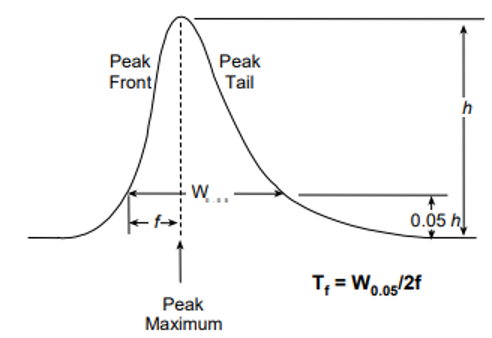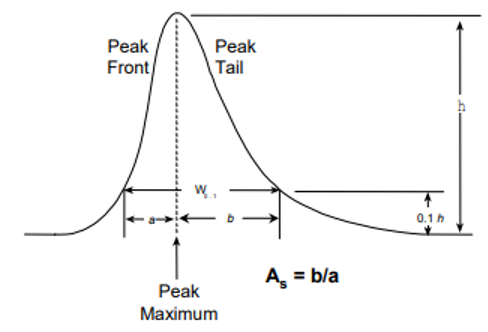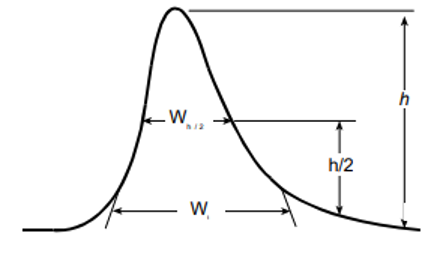1st Jun 2021
What Causes Peak Tailing in HPLC
What Causes Peak Tailing in HPLC
First, let’s explore what makes a “good” peak shape. In chromatography, a good peak shape is a symmetrical, or gaussian, peak. Good peaks with high efficiency and narrow peak widths are important for quality resolution and accurate quantitation. Poor peak shape includes both peak fronting and peak tailing.
How Is Peak Shape Measured?
USP Tailing Factor

W0.05 is the Width of the peak determined at 5% from the baseline of the peak height
f is the distance between peak maximum and peak front at W0.05
Asymmetry

Peak Width at ½ Height

What Factors Affect HPLC Peak Tailing?
- Silanol Interactions (for silica-based columns)
- Ionized silanols will ion-exchange with protonated bases which can cause tailing and method variability. This occurs most often at mid pH where silanols are ionized.
- Unprotonated acids can compete for H+ with protonated silanols; this can occur at low pH.
Some mobile phase additives can be added to the mobile phase to reduce these interactions. To reduce silanol interactions, we recommend selecting an HPLC column where the bonded phase is endcapped or polar embedded. Endcapped bonded phases minimize the number of unreacted silanols and potential peak tailing interactions. Polar Embedded bonded phases provide unique silanol shielding, which reduces peak tailing for basic compounds.
- Mobile Phase and pH
Inconsistent and tailing peaks may occur when operating close to an analyte’s pKa and should be avoided. Use buffering mobile phases for the best peak shape. In addition, increasing buffer concentration at mid pH is very effective at masking silanol interactions and reducing peak tailing.
Changing the mobile phase organic modifier (ie: Acetonitrile vs Methanol) may improve peak shape due to secondary interactions. - Extra Column Effects
If you have excessively long tubing lengths between the HPLC column and detector, consider replacing them with shorter tubing lengths. Also, look at the internal diameter of the tubing you are using, and potentially reduce the tubing ID. PEEK tubing is color coded; if you are using IDEX PEEK tubing, and it’s yellow (.007” ID), consider decreasing to the red tubing (0.005” ID).
Summary
In summary, when developing an HPLC method, it is important for quantitation and method ruggedness that peaks are “good” gaussian shaped peaks. For best results, select an HPLC column with an end-capped bonded phase. If compounds are basic, consider adding TEA (Triethyl amine) to your mobile phase. If your compounds are acidic, consider adding TFA (Trifluoracetic acid) to your mobile phase. Both modifiers will prevent tailing by competing with the sample for surface ion exchange sites (free silanols).

